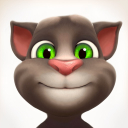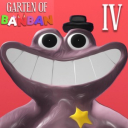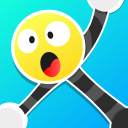Introduction to Python Programming for Beginners
Sep-21-2024

When I first stumbled upon Python, it was like uncovering a treasure chest filled with possibilities. As a beginner, the sheer variety of applications and the friendly nature of the language caught my attention. I was eager to learn how this powerful programming language could bring my ideas to life, from automating mundane tasks to developing web applications. Little did I know, my journey into Python programming was just beginning.
Why Python?
One of the first things that drew me to Python was its readability. Unlike other programming languages that often felt daunting, Python’s syntax is straightforward. I could focus on learning concepts rather than getting bogged down by complex code. The simplicity made it enjoyable and engaging to write and understand programs, which was incredibly encouraging for a newcomer like me.
Setting Up the Environment
Before diving into coding, I realized I needed an environment to work in. I opted for Anaconda, a popular distribution that simplifies package management and deployment. It came with Jupyter Notebooks, which I found especially useful for experimenting with code snippets and visualizing data. Simply installing Anaconda opened a whole new world of learning resources and tools at my fingertips.
Understanding Basic Syntax
Once my environment was ready, I dove into the basic syntax. I learned how to create variables and how to assign values to them. Simple commands like print() allowed me to see output immediately, reinforcing my understanding of how Python interprets my code. This instant feedback loop was immensely satisfying, as it felt like I was making tangible progress with each line I typed.
Data Types and Variables
Next, I immersed myself in the different data types that Python offers. There are strings, integers, floats, and booleans, each serving unique purposes. I experimented with string manipulation and learned how to concatenate them to create messages. Understanding these data types formed the foundation of my programming knowledge, enabling me to perform various operations efficiently.

Control Structures
As I progressed, I discovered control structures such as loops and conditionals. These constructs allowed me to dictate the flow of my programs. I started with if-else statements, which empowered me to make decisions in my code. The moment I integrated a loop to repeat actions was exhilarating; it felt like I had unlocked a new level of programming capabilities.
Functions: Breaking It Down
Functions became one of my favorite topics to explore. Learning how to define a function and call it opened up endless possibilities for code reuse and organization. I enjoyed experimenting with parameters and return values, discovering how they could help simplify complex tasks. Each function I created felt like a small victory, building my confidence along the way.
Lists and Dictionaries
Pythons’ data structures, such as lists and dictionaries, added incredible versatility to my coding arsenal. Lists allowed me to store multiple items, making it easy to manage collections of data. I found it thrilling to sort and slice lists, while dictionaries provided a way to associate keys with values. I could create complex data sets, paving the way for more advanced programming techniques.
Modules and Libraries
Exploring Python’s modules and libraries was like walking through a vast library filled with resources. With the help of pip, Python's package management system, I could install libraries like NumPy and pandas, enhancing my programming skills. I experimented with data analysis and mathematical operations, realizing that I could solve real-world problems using these powerful tools.
Object-Oriented Programming
As I delved deeper, I encountered object-oriented programming (OOP) principles. The concept of classes and objects fascinated me, allowing me to encapsulate data and functionality. Implementing OOP principles helped me understand how to create reusable code structures and design complex applications more efficiently. Every class I built brought a sense of accomplishment, feeling as though I was creating living entities within my program.

Error Handling
No programming journey is complete without the experience of debugging. Learning about exceptions and error handling taught me how to anticipate issues before they arose. Rather than viewing errors as obstacles, I began to see them as valuable learning moments. By catching exceptions and implementing try-except blocks, I could gracefully manage unexpected situations in my code.
Working with Files
Reading from and writing to files was another exciting frontier. I learned how to open, read, and close files in Python, allowing me to store data and retrieve it later. The ability to automate file-handling processes compelled me to think critically about how I could manage information more effectively. This newfound skill broadened my horizons for creating programs that could interact with the outside world.
Introduction to Web Development
My curiosity eventually led me to explore the world of web development with Python. I was introduced to frameworks like Flask and Django, which simplified building web applications. Constructing a simple web app felt like magic, as I got to combine my programming skills with creativity. Understanding how to set up a web server and manage routes sparked my interest in creating user-friendly interfaces.
Data Visualization
Data visualization became an essential part of my Python toolkit. Learning to create graphs and charts using libraries like Matplotlib and Seaborn turned raw data into visual stories. I loved how a well-crafted graph could convey complex information at a glance, making my analyses more accessible to others. This skill not only enhanced my programming capabilities but also opened up opportunities for collaboration in data-driven projects.
Community and Learning Resources
Throughout my journey, I discovered an invaluable community of Python enthusiasts. Online platforms like Stack Overflow and GitHub provided overwhelming support and inspiration. Engaging with others through forums and coding challenges helped solidify my knowledge and exposed me to diverse perspectives. I learned the importance of collaboration and sharing ideas within the programming community.
Building Real Projects
As I became more comfortable with Python, I felt compelled to apply my skills to real projects. I started working on personal projects that excited me, such as building a simple blog or a to-do list application. These projects pushed me to step beyond my comfort zone and implement everything I had learned. The sense of achievement after completing these projects affirmed my decision to pursue programming further.
Transitioning to Advanced Topics
The transition from beginner to intermediate Python programming felt like climbing a steep mountain, but with determination, I eagerly embraced more complex topics. I delved into concepts like decorators, generators, and web scraping, each presenting its own unique challenges and rewards. It was exhilarating to see how these advanced techniques could enhance my programming efficiency and broaden my capabilities.







